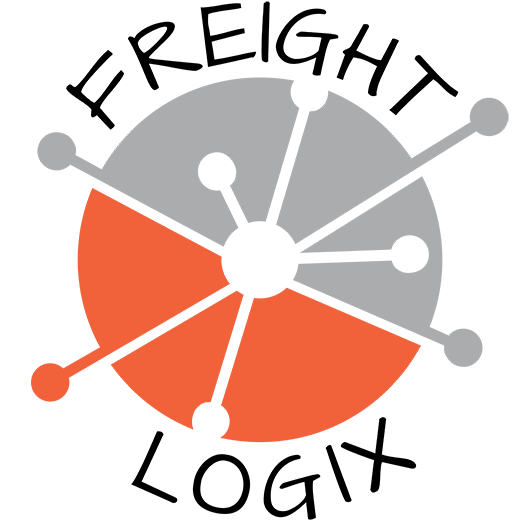When it comes to selecting the right mode of transportation for your freight, there are several crucial factors to consider. Let’s review them one by one.
1. Cost
Cost is one of the most significant factors to consider when choosing a mode of transportation for your freight. To make the best decision, it’s important to compare the costs of different transport modes such as air, sea, road, and rail.
Several factors can influence the cost of each mode, including:
- Distance
- Weight of the freight
- Volume of the freight
- Shipping frequency
- Fuel prices
- Labor costs
- Government regulations
Once you have a clear understanding of these factors, you can determine which mode is most cost-effective for your specific freight needs. Choosing the right mode of transport can help you save money and increase your profit margins while ensuring the timely and efficient delivery of your goods.
2. Reliability
Another crucial factor to consider when selecting a mode of transportation for your freight is reliability. Ensuring the safety and security of your cargo is essential, and you need to choose a mode of transport that you can rely on to deliver your goods on time and without damage. Different modes of transportation have varying levels of reliability when it comes to on-time delivery and cargo handling.
For instance, air transportation is typically faster and more reliable than sea shipping, but it can be more expensive. Meanwhile, sea transportation may have longer transit times but can be more cost-effective for certain types of cargo.
To evaluate the safety and reliability of different modes, you should consider factors such as:
- Carrier reputation
- Track record
- Safety certifications
- Insurance coverage
By taking these considerations into account, you can choose a mode of transport that offers the best balance of reliability, safety, and cost-effectiveness for your specific freight needs.
3. Regularity of Service
Depending on your business needs, you may require a transportation mode that offers frequent and reliable service.
For example, if you’re shipping perishable goods that have a short shelf life, you’ll need a mode of transport that provides frequent departures and arrives on time. On the other hand, if you’re shipping non-perishable goods, you may be able to tolerate longer transit times and less frequent departures.
Additionally, the regularity of service can also affect your supply chain management and inventory control. If you rely on just-in-time inventory management, you’ll need a transportation mode that offers predictable and reliable delivery schedules.
It’s essential to evaluate the regularity of service offered by different transportation modes and carriers. This helps you ensure that you select a mode that meets your specific needs and enables you to maintain efficient supply chain operations.
4. Safety and Security
The safety and security of your cargo are paramount when selecting a mode of transportation for your freight. You need to choose a mode of transport that provides adequate safety and security measures to protect your goods from damage, theft, or loss.
Each mode of transport has its own safety and security protocols, and it’s important to compare them before making a decision.
For example, air transport typically offers better security measures than freight trucks, as air carriers are subject to strict security regulations. Meanwhile, sea transport can be more vulnerable to piracy and theft, but it offers the advantage of being able to transport bulky and heavy goods.
5. Type of Freight
Different types of cargo have specific transportation requirements, and you need to choose a mode of transport that can meet these needs.
For example, perishable goods such as fruits and vegetables require temperature-controlled transportation, which is typically provided by air or refrigerated road transport. Meanwhile, heavy equipment and machinery require specialized handling and may be best transported by sea or rail transport.
The nature of your cargo can also affect the choice of transport mode in terms of cost, transit time, and safety. For instance, high-value goods such as electronics or pharmaceuticals may require additional security measures, which can be provided by air transport. On the other hand, low-value goods may be more cost-effectively transported by sea or road transport.
By understanding your specific cargo requirements, you can select a mode of transportation that ensures the safe and timely delivery of your goods.
6. Speed of Transport
Depending on your business needs and the urgency of your shipment, you may require a mode of transport that can deliver your goods quickly:
- Air transportation: In terms of speed, air transportation is typically the fastest method for transporting goods over large distances. However, it can also be the most expensive mode of transport.
- Road and rail transport: Road and rail transport are generally slower than air transport but can be more cost-effective for shorter distances.
- Sea transport: Sea transport is the slowest mode of transport but can be a cost-effective option for bulky and heavy goods that do not require urgent delivery.
To make sure you choose a mode that meets your needs, you need to take your shipment’s specific requirements into account and balance the speed of delivery against transportation costs.
7. Flexibility
You may need a transportation mode that is flexible in terms of routes, schedules, and cargo handling.
For example, air transport can provide a high level of flexibility, allowing you to ship your goods to multiple destinations worldwide and handle urgent shipments quickly. Similarly, road transport can offer flexibility in terms of delivery routes and schedules, allowing you to adjust your shipment based on changing customer demand.
On the other hand, sea and rail transport may have limited routes and schedules, but they can provide cost-effective options for bulky and heavy goods that don’t require urgent delivery.
8. Transit time
The transit time refers to the duration it takes for your goods to be transported from the point of origin to the destination. Transit time can vary significantly depending on the mode of transportation used, the distance between the origin and the destination, and any transit stops or transfers involved.
Air transport is typically the fastest mode of transport, with transit times ranging from a few hours to a few days. Meanwhile, sea transport can take weeks or even months.
The transit time can impact the type of goods being transported, with perishable and time-sensitive goods requiring faster transit times.
When selecting a mode of transport, it’s essential to evaluate the transit time of different transportation modes and carriers. This way, you can choose a mode that meets your specific delivery requirements while remaining cost-effective.
9. Distance
The distance between the point of origin and destination can impact the choice of transportation mode based on the capabilities of each mode.
For example, air transport is typically used for long distances or international shipments due to its speed and ability to cover vast distances quickly. On the other hand, road transport is typically used for shorter distances within a region or country. And sea transport is often used for intercontinental shipments of bulky and heavy goods.
The distance can also impact the type of goods being transported. You’ll need to choose a faster mode of transportation for perishable and time-sensitive goods. Meanwhile, you can choose slower transportation to ship bulkier and less time-sensitive goods.
Overall, when selecting a mode of transport, it’s essential to evaluate the distance between the origin and destination and the specific requirements of your cargo.
10. Regulatory Compliance
Different modes of transport are subject to different regulations governing the transport of goods, including safety, security, and environmental regulations. It’s important to ensure that you comply with these regulations to avoid any penalties, fines, or legal issues.
For example, if you’re shipping hazardous materials, you’ll need to comply with strict regulations governing the handling, labeling, and transportation of these goods. If you’re shipping internationally, you’ll need to comply with customs regulations and ensure that you have all the necessary documentation for your shipment.
11. Environmental Impact
Environmental impact is an increasingly important factor to consider when selecting a mode of transportation for your freight. Different modes of transport have varying environmental impacts, including greenhouse gas emissions, noise pollution, and energy consumption.
For example, air transport is a major contributor to greenhouse gas emissions, while sea transport has a lower carbon footprint but can contribute to ocean pollution.
Sustainable transportation options, such as rail or electric vehicles, are becoming more popular for freight transportation due to their lower environmental impact. When selecting a mode of transport, it’s important to consider the environmental impact of each option and choose a mode that minimizes your carbon footprint while meeting your specific transportation needs.
Choosing an environmentally friendly mode of transport not only benefits the environment but also enhances your company’s reputation and can attract environmentally conscious customers.
Ready to Choose the Mode of Transportation for Your Freight?
Overall, choosing the right mode of transportation for your freight involves weighing up various factors, each of which can have a significant impact on your business operations and profitability. It’s essential to balance these considerations to make an informed decision that meets your specific needs.
One way to make this process easier is to work with a freight broker. At Freight Logix, we can help you navigate the complex world of freight transportation. We leverage our industry knowledge, experience, and network of carriers to help you find the most cost-effective and efficient transportation solutions for your freight.
Contact Freight Logix today to discuss your specific transportation needs and find the most efficient freight solutions.

Building relationships one client at a time. Put our 65 years of combined industry experience to work for you!
In today's fast-paced business environment, partnering with a trusted logistics provider like Freight Logix can make all the difference in achieving your goals and staying ahead of the competition. Our expertise in handling complex supply chain operations, coupled with our commitment to delivering exceptional customer service, makes us the ideal partner for businesses of all sizes and industries. By choosing Freight Logix for your logistics needs, you gain access to our experienced team, state-of-the-art technology, and extensive network of resources, ensuring that your products are delivered to their destinations on time and in perfect condition.
At Freight Logix, we understand that each client's logistics requirements are unique, and we pride ourselves on providing customized, end-to-end solutions that address your specific needs. Our innovative approach to logistics management not only streamlines your supply chain operations but also offers valuable insights for continuous improvement and growth. By leveraging our industry knowledge, advanced analytics, and cutting-edge technology, we help you optimize efficiency, reduce costs, and enhance your brand's reputation in the market. Trust Freight Logix to be your dedicated logistics partner, and experience the benefits of our expertise, flexibility, and commitment to your success.
Don’t take a chance ... call 714.369.2188 or Email Freight Logix today and get your freight job done right. Our work is guaranteed ... we won't stop until the job's done right and to your satisfaction!
Want to learn more?
Curious about Freight Logix's prices and services?
Would you like a free quote?
Have a question?



